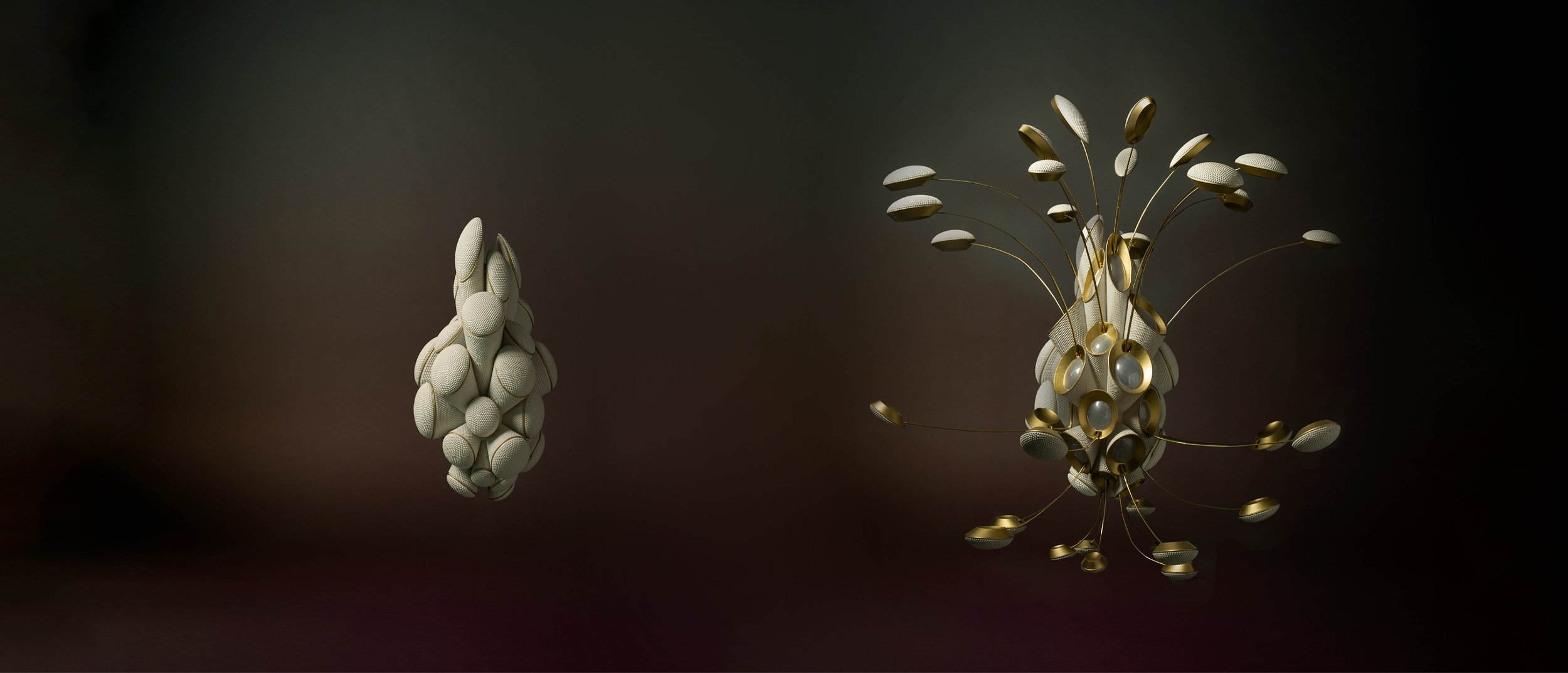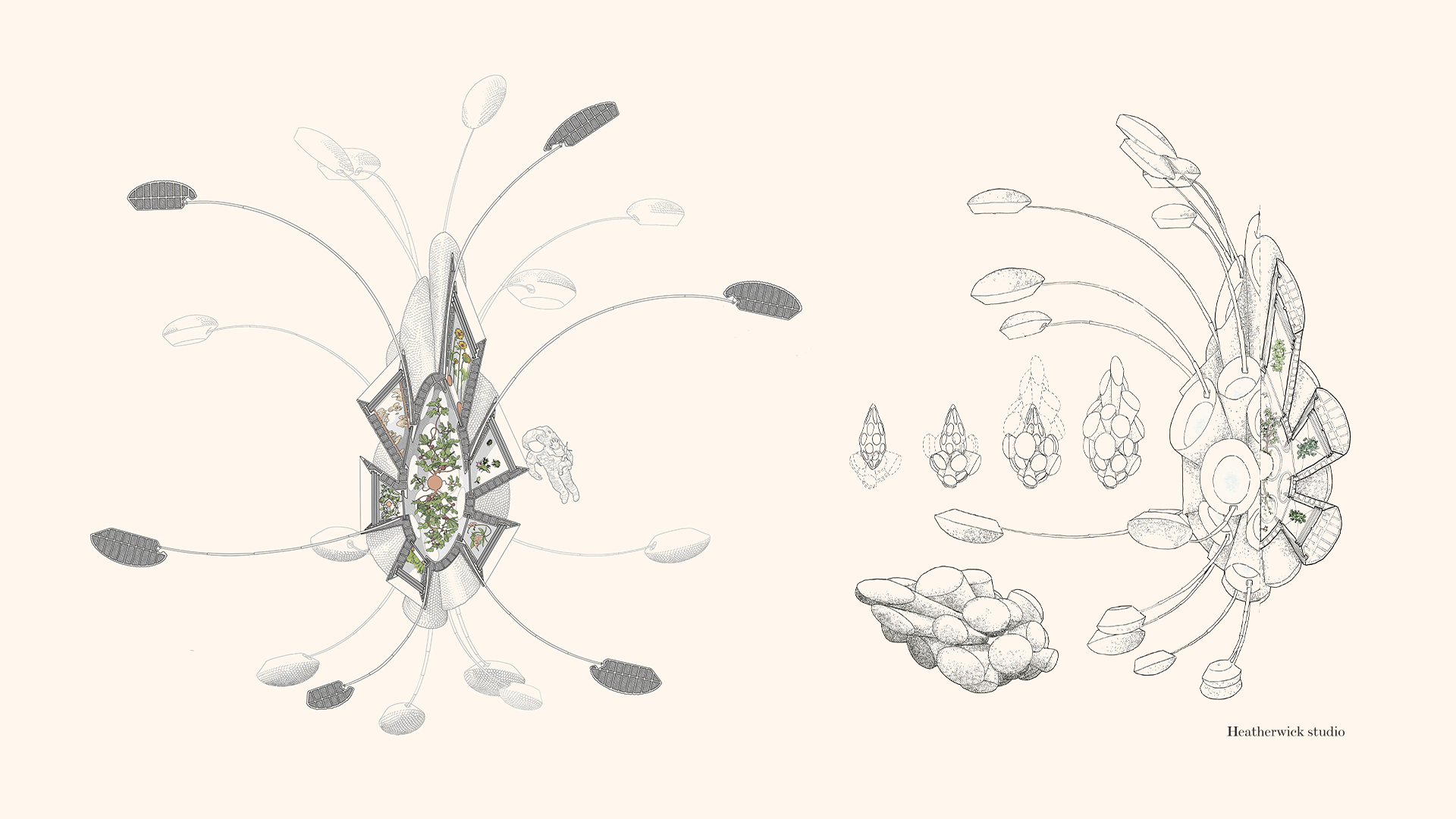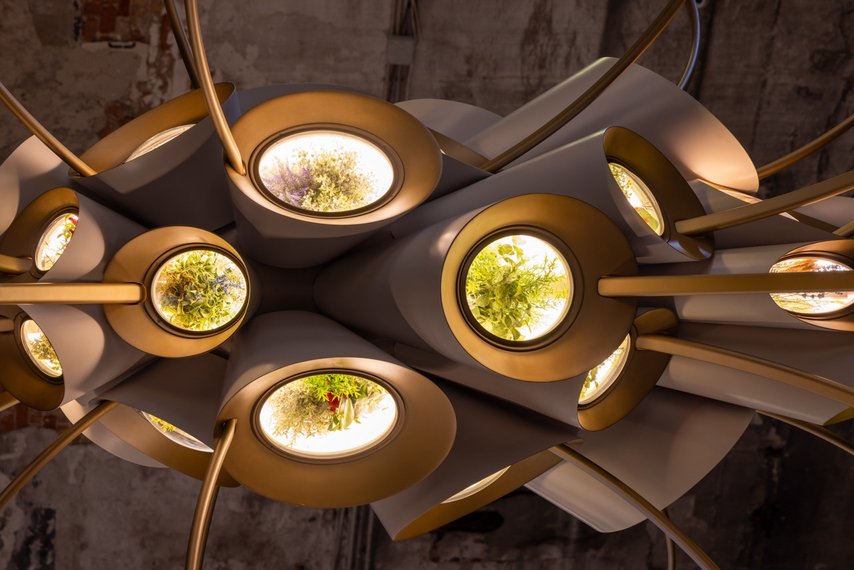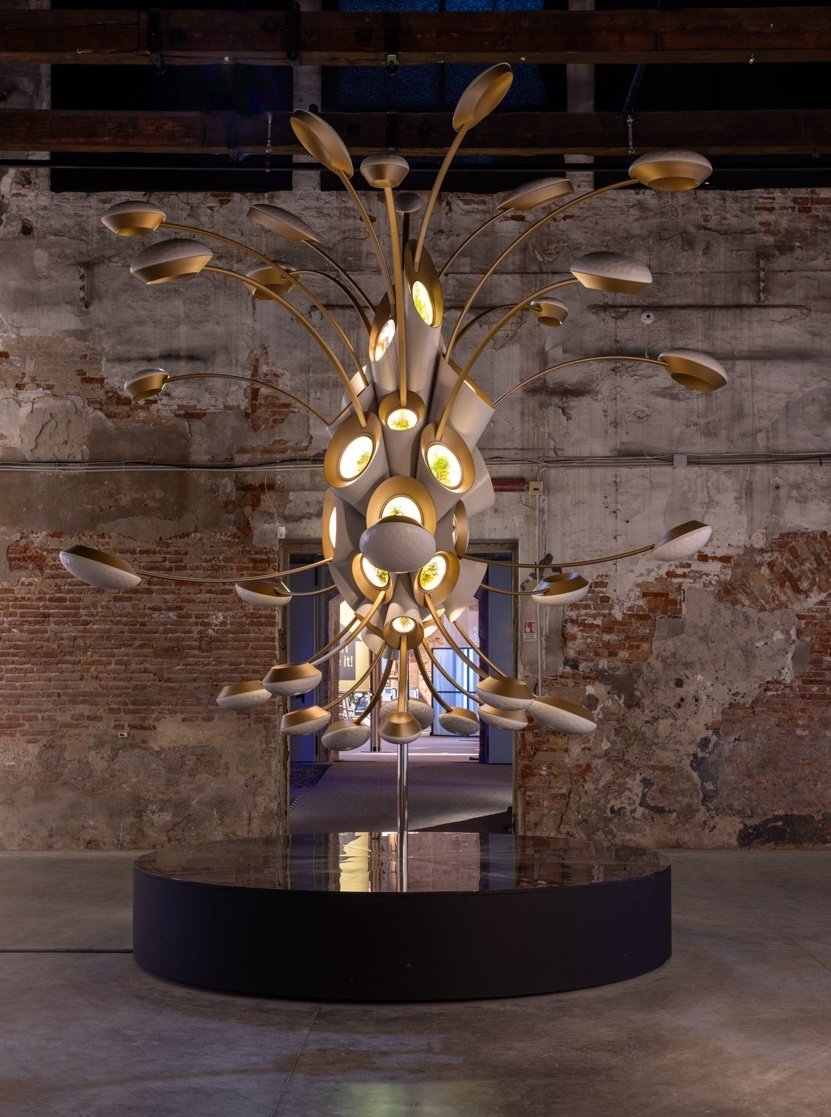SPACE HABITAT R&D
Space Garden
Earth will always be humanity’s first home, our origin site where we co-evolved with a planet. Outer space does not represent an escape, but rather a limitless opportunity to reduce the burdens we place on our home planet. How might we harness the resources, challenges, and affordances of Low Earth Orbit to make scientific, technical, and creative advances?

Space Garden proposes an orbiting, autonomous greenhouse that will support cutting-edge agricultural research and global engagement in the future of our Earth-Space ecosystem. Created in collaboration with Heatherwick studio, the Space Garden is a scientifically informed “community garden” model for plant selection and stewardship that connects next-generation work in LEO back to Earth’s citizens and the planet’s long-term needs.
The structure is composed of a central chamber and 30 growth pods with individually controlled climates, designed for a variety of fruiting and flowering plants, trees, fungi, and algae. A section model of one growth pod was built at the Autodesk Technology Center in Boston as part of our participation in the Autodesk Research Residency Program; a scale model of the full structure was fabricated by Millimetre in the UK.
Objective
Space Garden’s primary objective is to test autonomous horticulture and production of novel, high-impact (e.g., oxygen, nutrition, yield) crops in the microgravity environment. This research is critical to enabling future long-duration space exploration missions and supports technology transfer towards better agricultural strategies in resource-constrained environments on Earth.
Design
The system features an ambitious aesthetic design with “tendril” window covers and isolated growth chamber nodes. Contained within the Space Garden are standard spacecraft subsystems optimized for operation in Low Earth Orbit, such as artificial lighting to provide a stable growth environment for the crops; solar arrays for all electrical power generation; and an active thermal control loop with deployed radiators for thermal control.
Space for Earth
Our Space Garden model and Biennale Architettura 2025 exhibit is one step in a multi-year committed pathway to de-industrialize Earth’s surface — (i.e. offworld heavy industry and polluting processes) — and build space infrastructure in service of Earth. Aurelia Institute is excited to be partnering with experts across various industries to bring the vision of Space Garden to life.

Premiering at the Biennale Architettura 2025
Space Garden is in the early phases of research and development as a functioning, autonomous spacecraft. As the engineering team works on the technology roadmap to bring this ambitious project to orbit, Aurelia and Heatherwick are delighted to bring an Earthbound installation version of the Space Garden concept to the 19th International Architecture Exhibition of La Biennale di Venezia.
The Space Garden model and research prototypes will be exhibited in the Artiglierie building at the Biennale Architettura 2025, curated by Carlo Ratti, from May to November of 2025. Visitors will be able to inspect representative life-support systems for a sample plant species within a section model of a single plant pod or chamber, as well as a one-third-scale illuminated model of the full structure.
Space Garden is both an intentionally provocative visual design that pushes the field of space architecture forward, and a technically rigorous aerospace demonstration mission. A second, no less important objective of Space Garden is to inspire creative architectural design in orbit. We hope that through this exhibit, designers, architects, and other creatives will feel moved to envision their own concepts for humanity’s future in space.

Technology Roadmap
A research paper detailing the engineering and technical components of the Space Garden has been accepted by the International Conference on Environmental Systems, and will be presented at the 2025 ICES conference this summer.
Aurelia is excited to be partnering with industry experts to bring each of the Space Garden systems to life. With a century of expertise pioneering energy-efficient heating, ventilation and air conditioning (HVAC) technologies, Daikin is applying its core philosophy of collaborative innovation to explore new opportunities to deliver HVAC solutions that meet the unique demands of space. Aurelia and Daikin will work together to explore groundbreaking approaches to air and water management for the next hundred years — both on Earth and in orbit.
Acknowledgements
We are grateful for the expertise, technical assistance, and material collaboration with:
Thomas Heatherwick
Founder & Principal, Heatherwick Studio
Thomas Heatherwick is one of the world’s most inventive and celebrated designers, whose work is characterized by its originality, diversity and humanity. His studio comprises 10 partners and 250 people dedicated to making the physical world that surrounds us more joyful and engaging.
Dr. John Mather
Nobel Prize Laureate in Physics, NASA
Dr. John Mather is a Nobel Prize-winning astrophysicist who led NASA’s COBE satellite mission, providing evidence for the Big Bang theory through precise measurements of cosmic microwave background radiation. He serves as Senior Project Scientist for the James Webb Space Telescope.
Brent Sherwood
Former SVP, Advanced Development Programs, Blue Origin
Brent Sherwood is a space architect with 30+ years of professional experience in the civil and commercial space industry — at NASA, Boeing, the Jet Propulsion Laboratory, and Blue Origin. He has published and presented over 50 papers on the exploration, development, and settlement of space.
Technical Collaborators
We also gratefully acknowledge sponsorship from James Anderson and the firm Skadden, Arps, Slate, Meagher & Flom for this project. Skadden regularly advises parties within the aerospace industry, as well as in related regulatory considerations, sensitive technologies and national security issues. Skadden’s capabilities are backed by years of experience — both inside the federal government and in the private sector — navigating complex federal requirements in critical business sectors.











